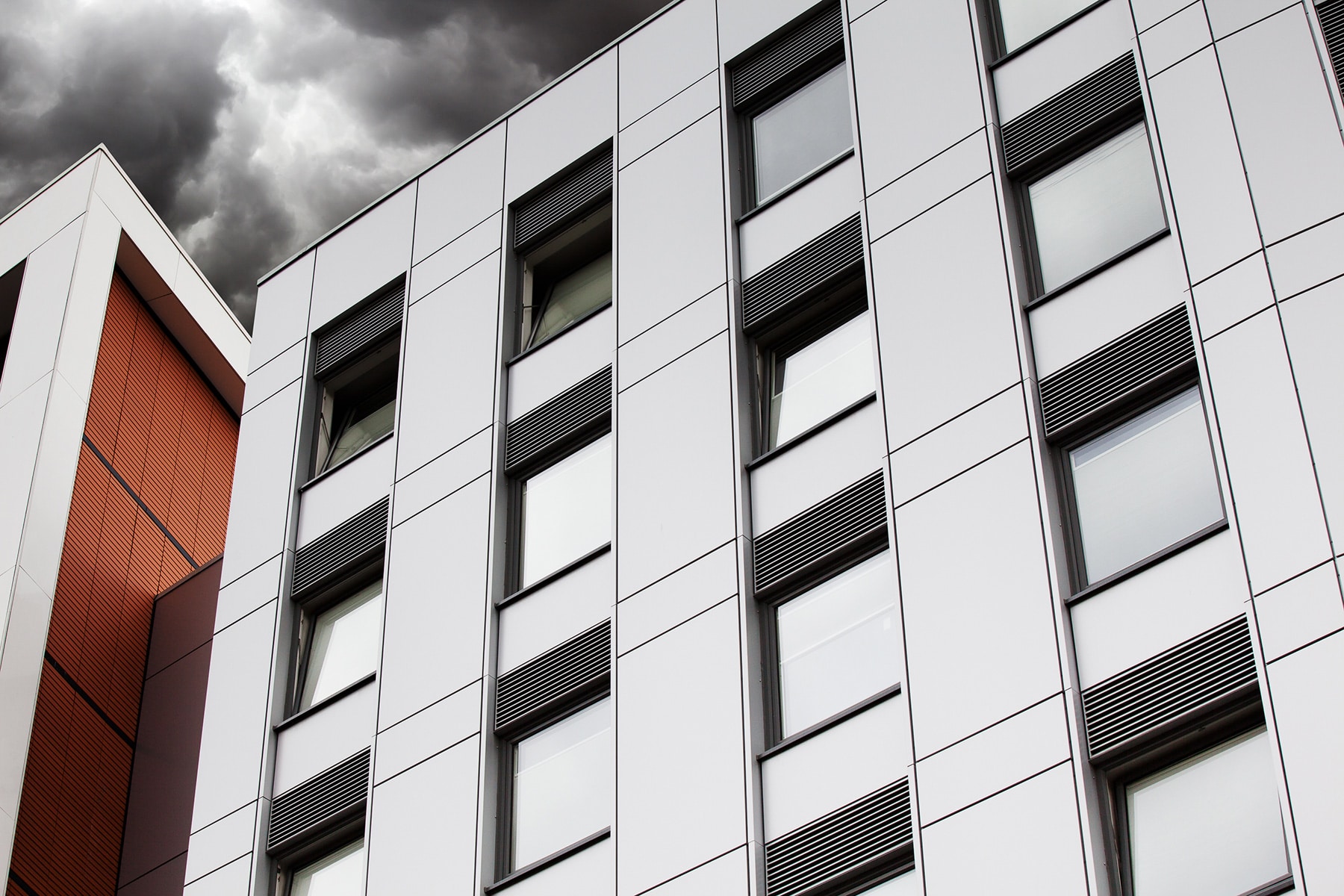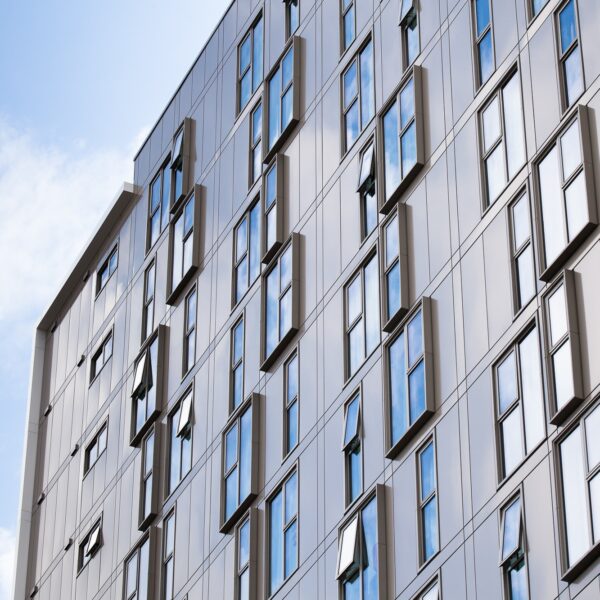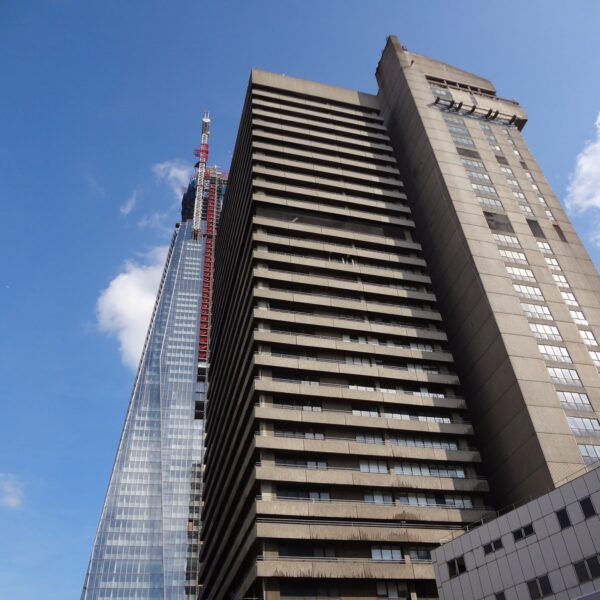Storm Desmond has caused havoc across the UK this month, with floods across the North West causing around £500 million worth of damage and leaving 45,000 homes without power.
According to the Environment Agency, although the flood defences in the area were built to withstand flooding of ‘a certain magnitude’, they can be overwhelmed in extreme storms or if they are not properly maintained.
If we cannot rely on flood defence in the most extreme situations, is there a way to arm buildings themselves against worsening weather? Could advancements in rainscreen cladding be a way to do this?
We explored how architecture can be used to combat weather emergencies in this blog, ‘Are flat roofs a viable flood solution?’; this idea would involve designing houses with flat roofs which allow excessive rain water to be stored temporarily, and drained away gradually. Even with the water storage at only 3 inches deep, this could be a very effective solution, with a range of environmental benefits.
Rainscreen cladding itself is designed to be weather resistant and to protect a building’s external walls from rain damage; the purpose of rainscreen is to allow for the proper drainage of rain and prevent it from soaking into the building and causing lasting problems.
How does rainscreen cladding drain water?
The core way that rainscreen systems protect buildings from water damage is by keeping the buildings external structure and the cladding used on the building completely separate. This space between the cladding and exterior wall is key for preventing water from actually penetrating and damaging a building.
There are several types of rainscreen cladding that achieve this is different ways.
Ventilated rainscreen cladding systems are common in domestic homes and smaller commercial buildings, meaning they could be a key flood defence for homes in flood-prone areas. These systems work by creating a continuous air space between the wall and the cladding which is open at both the top and the bottom. This encourages the flow of air and speeds up the drying process if water does get in.
Pressure-equalized rainscreen cladding systems are more suitable for tall commercial buildings, and differ from a ventilated system in that they’re designed to prevent any moisture from entering the gap between the cladding and building altogether. They are closed at the top, meaning they can only allow drainage from the bottom, and the rainscreen is split into ventilation cavities. These cavities respond to constantly changing pressure in the cavity by generating air pressure to match any wind pressure that enters and push it back out, and prevent wind-driven rain from entering the cavity too.
There are also some specific rainscreen cladding system options that can offer an element of weather protection, one example being Corten. Corten is made from a group of weather resistant steel alloys which were developed to eliminate the need for painting, and to form a stable rust-like appearance when exposed to weather. The steel used to create Corten is completely weather resistant, whilst retaining much better anticorrosive properties than those of other structural steels.
Rainscreen panels manufactured and finished in anodised aluminium are also a good choice with regards to weather protection; the anodised finish gives the metal additional strength that make it very resistant to abrasion and corrosion caused by extreme weather.
Though generally more costly than other cladding options, rainscreen cladding is key to ensuring the safety of residents and the longevity of a building in wet climates like the UK.
How can we protect buildings from other types of freak weather?
- Storms and strong winds – this kind of weather can potentially cause damage to the structural integrity of your building; making sure you reinforce the core structure and the roof, as well as guttering and drainage, will be key to minimising damage.
- Particularly wet winters – we all expect wet and cold weather during the winter months, but one with more rain and snow than usual can spread damp throughout your home. Ensuring plenty of ventilation and using a rainscreen cladding system like we previously discussed will be key for protecting your home in these conditions.
- Drought – extreme weather doesn’t always mean wet and windy; weather that’s too hot or dry can also impact a building and the people in it, and could cause a shortage of water. The flat roof concept that we mentioned as a solution for floods could also help here, in that water caught in storage tanks on your roof can then be used to fuel your building, rather than wasted.
How do you think we can improve flood defences in the UK? And how can buildings of the future use rainscreen cladding more effectively to protect our cities?
Sotech has invested heavily in sophisticated design and manufacturing technology.
All Sotech Optima Rainscreen Systems have been independently tested to meet CWCT rigorous specification for rainscreen.
Contact us today on 0191 587 9213 or technical@sotech-optima.co.uk to discuss your project.





 No downloads in list yet.
No downloads in list yet.